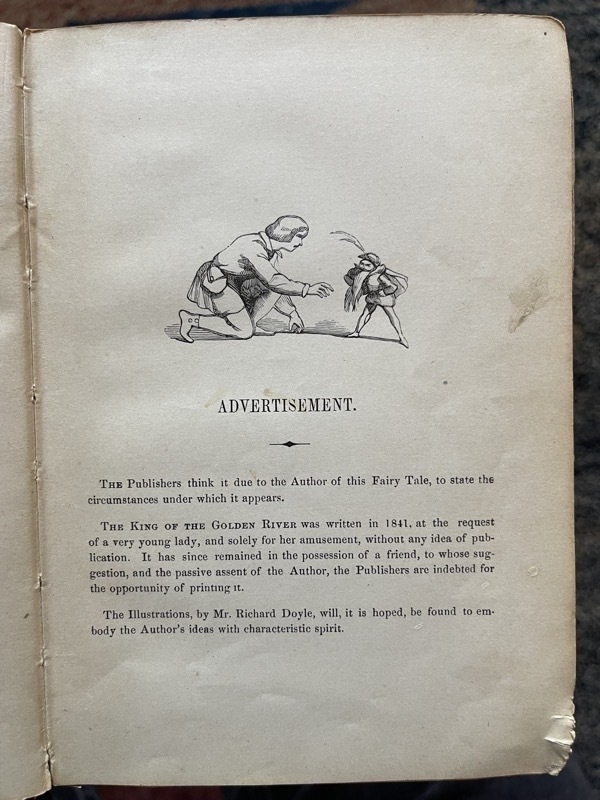I found this copy of The King of the Golden River, or The Black Brothers by John Ruskin in my stepdad’s workshop. Written in 1841; this edition printed in 1889. A handsome, battered old book.
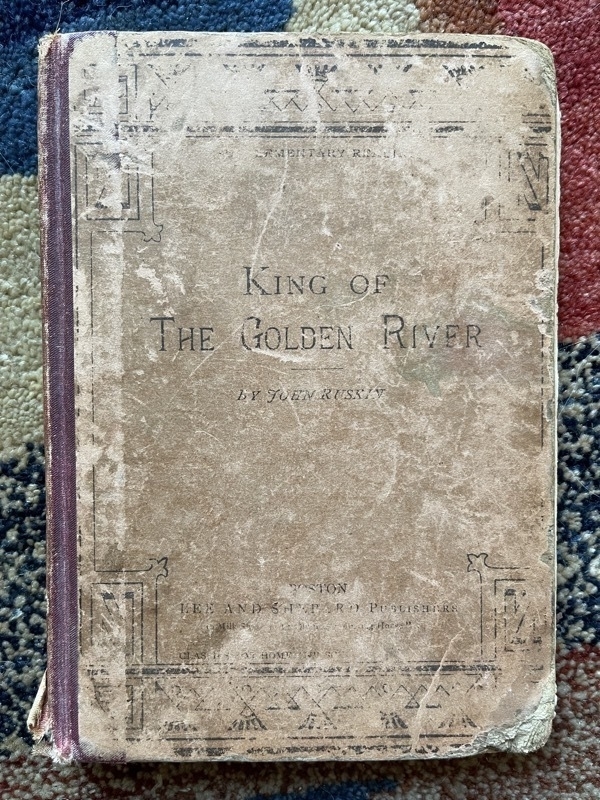
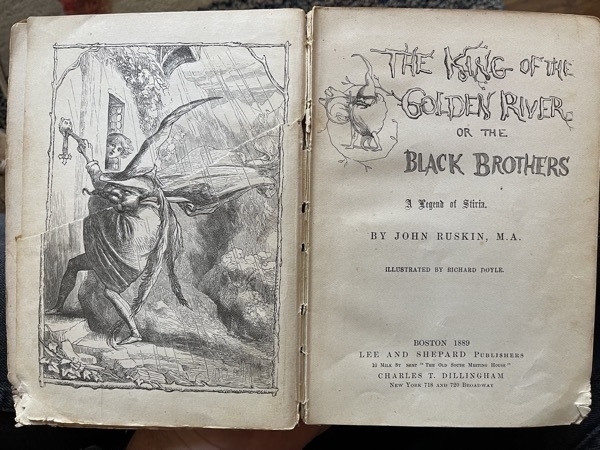
The story concerns three brothers—the elder two pure evil, the youngest with a heart of gold—who find their fates through several encounters with fairies. It’s short, beautifully written, with all the pleasures of a fable where each character gets his just deserts. (There are no female characters.)
I happen to be reading Little, Big by John Crowley right now, a book from 1981 with a similar emphasis on the little folk. The two books even nearly share a character—Crowley has Brother North-Wind while Ruskin has Southwest Wind, Esquire. Coming across source material is always interesting. I will say that Ruskin’s fairies—there are just two in the story—are strange and eerie in a way not always matched by Crowley’s much more multitudinous but also more mysterious and evasive fairies.
The strangeness of the story is enhanced by the artifact quality of the book. Look at the marriage of engravings and typesetting, and the now-ancient repairs.
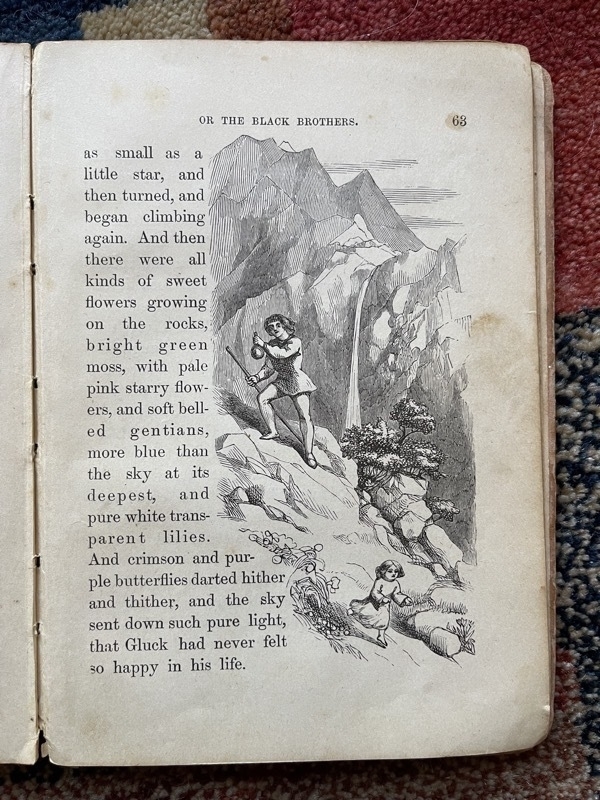
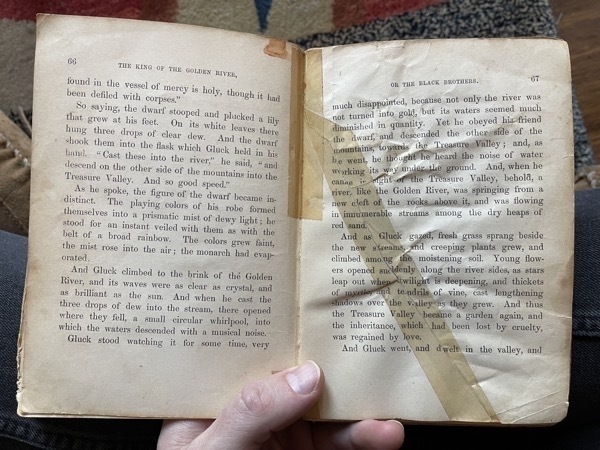
This edition belonged to my step-grandma, Pat, who passed away in 2022. She was given it by her own grandma’s boyfriend, in 1945, about nine months before the end of the Second World War. At the time, this edition was already 46 YEAR OLD, as someone helpfully noted on the frontispiece. It is now 128 years old.
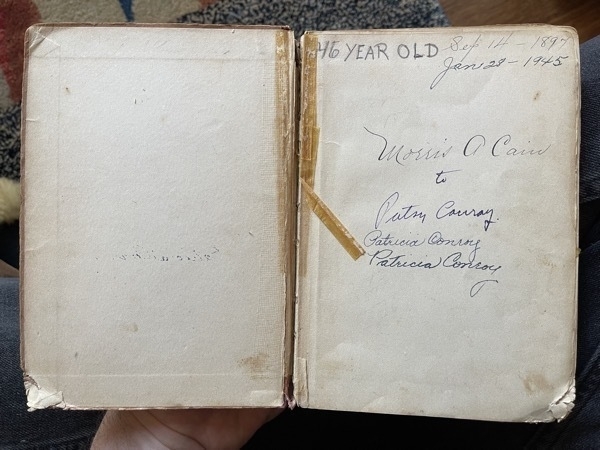
And it has a peculiar ADVERTISEMENT before the text. Ruskin wrote this for a 12-year-old Effie Gray, who he later married when she was 19. (He was 21 when he wrote this book for her.) This seems bad but is slightly complicated by the fact that when they divorced both parties insisted they had never consummated the marriage—he had refused her. He went on to be perhaps the most famous art critic in English language history. She went on to be one of the greatest pre-Raphaelite models, as well as a writer herself.
